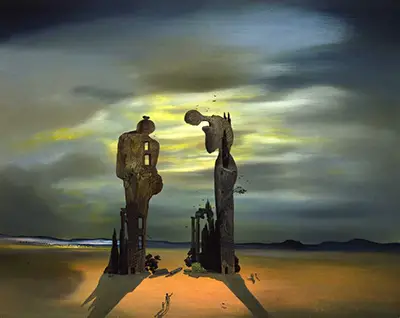However, Dali interpreted this artwork somewhat differently compared to previous artists; instead of viewing it as a work of spiritual significance, he depicted the subjects as ancient towers on Ampurdan plain. He recreated a rather eerie atmosphere around the figures standing erect on the moonlit plain. The female is slightly taller than the male to fit his understanding of his artwork. According to Dali’s analysis, the subjects represented messages of subdued sexual aggression symbolised as praying mantises. He insisted that Millet’s painting was a symbol of the female sexual power depicted by the taller female figure.
Dali was a stout Surrealist at the time he analysed the Archeological Reminiscence Millet's Angelus painting. Surrealism was a movement touted for creating unnerving photographic images from everyday objects and used painting techniques that enabled the unconscious to express themselves. In Dali’s analysis of the Archeological Reminiscence Millet's Angelus picture, he transforms the figures into monuments to represent ancient principles of human sexuality. He also alludes to the figures resembling praying mantis, which was a predominant theme during the Surrealism era. In this case, it signifies conflicting feelings of despair and attraction within the realm of desire. Dali felt that the female figure was the dominant partner and posed a sexual threat to her male partner. The male character, on the other hand, represents sexual repression, impotence and fear.
Salvador also had believed that the two figures were mourning over a buried child. He was so insistent on this idea that an X-ray of the canvas was conducted. It almost confirmed his suspicions as the x-ray showed a painted-over geometric silhouette that was similar to a coffin. Between the years 1926 and 1929, Salvador made several trips to Paris where he met influential artists like Pablo Picasso who inspired him to create some pieces of artwork. He also met Joan Miro, the sculptor and Spanish painter, Rene Magritte and Paul Elaurd who was a poet. The painters introduced Dali to Surrealism and helped him realise his unique themes- sexual symbolism, man's universe and sensations, and ideographic imagery. These themes inspired most of Dali’s work, including the Archeological Reminiscence Millet's Angelus painting before he changed to other painting influences.

